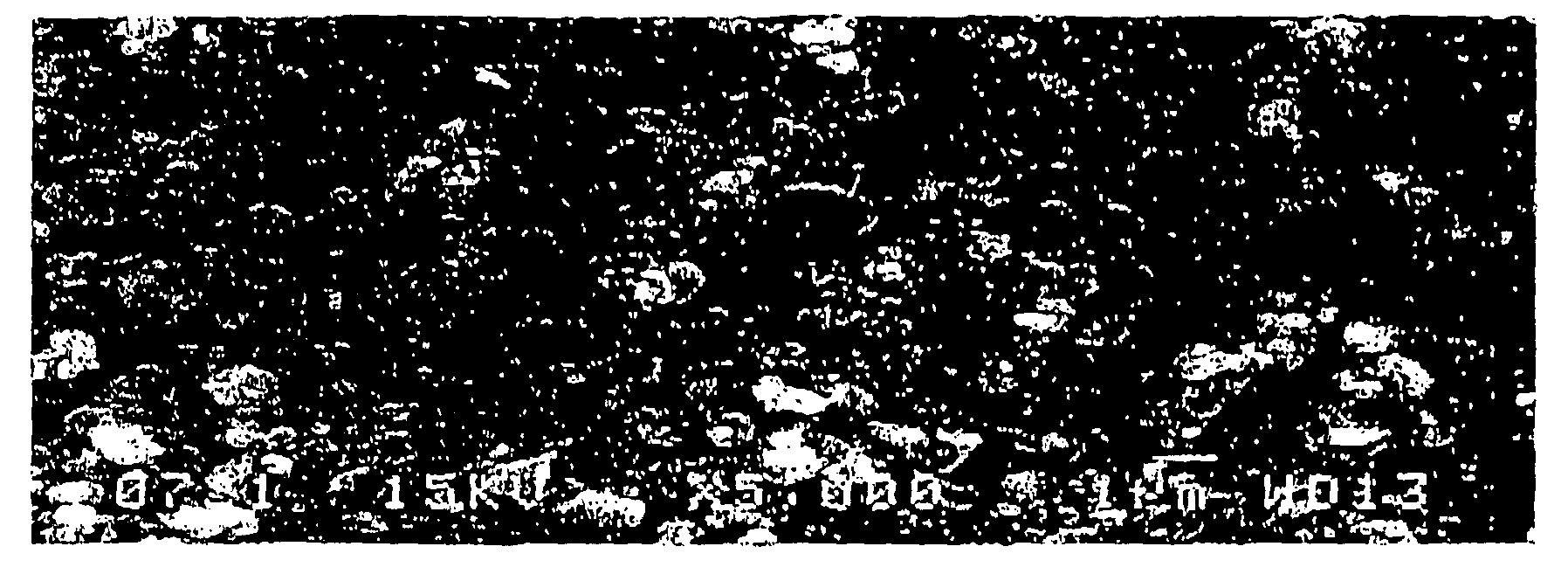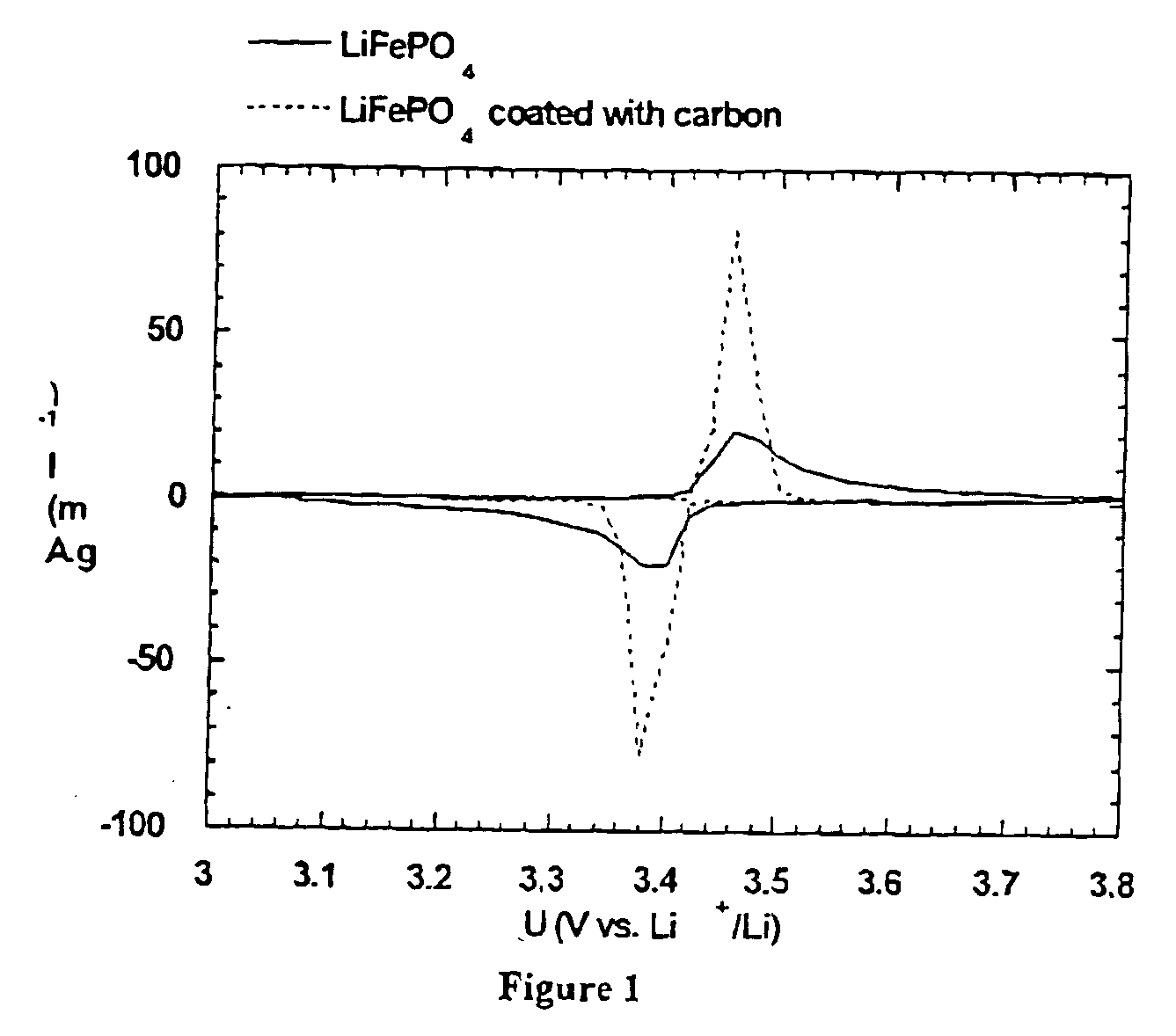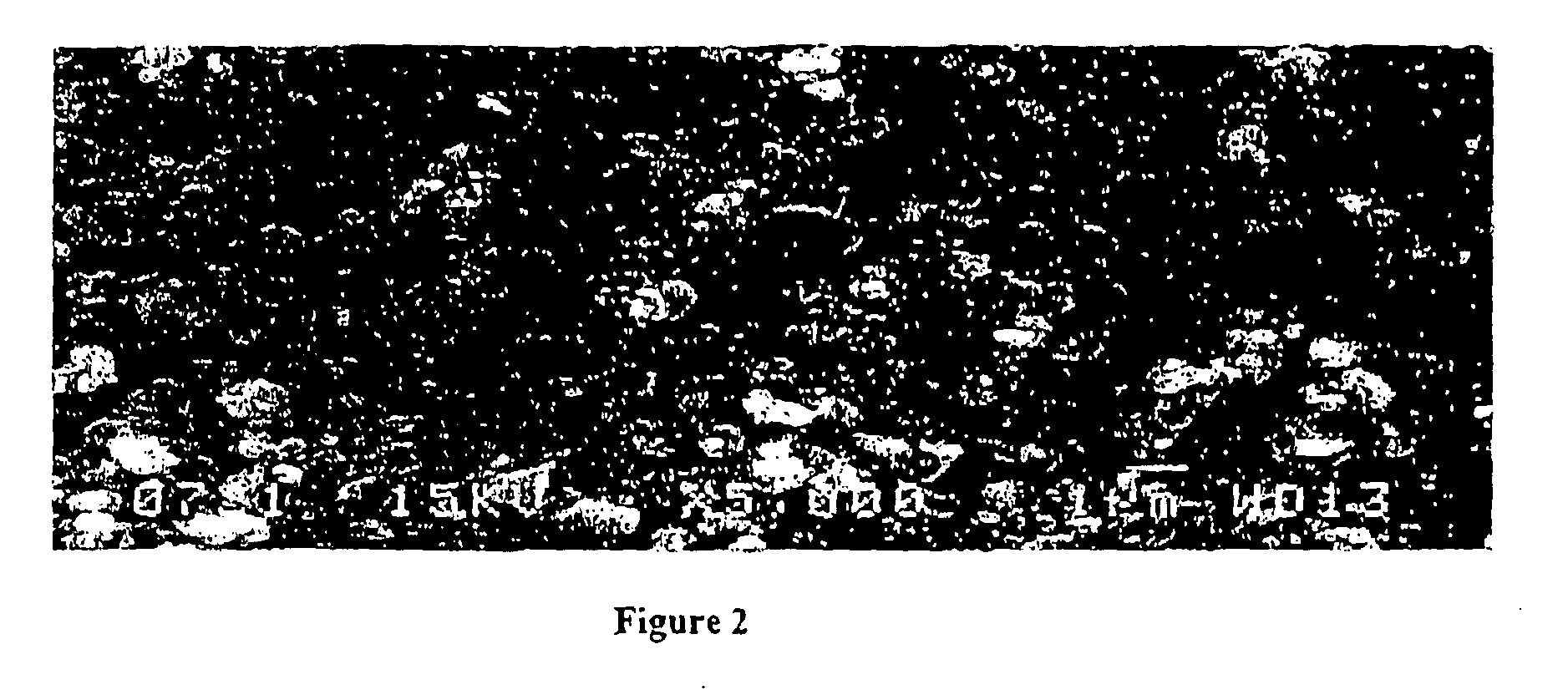Synthesis method for carbon material based on lixm1-ym'(xo4)n
a carbon material and synthesis method technology, applied in the direction of sulfur compounds, peroxides/peroxyhydrates/peroxyacids/superoxides/ozonides, etc., can solve the problems of inability to reproduce the electrochemical behavior of samples, increase the cost of materials accordingly, etc., to reduce the cost of lifepo.sub.4, reduce the number and cost, and simplify the synthesis process
- Summary
- Abstract
- Description
- Claims
- Application Information
AI Technical Summary
Benefits of technology
Problems solved by technology
Method used
Image
Examples
example 1 '
Example 1'
Preparation of LiFePO.sub.4 Coated with Carbon Synthesized Using the Sample Prepared in Example 1
[0126] The triphylite obtained in example 1 is impregnated with a solution of cellulose acetate (39.7% by weight of acetyl, average molecular weight M.sub.w of 50,000) in acetone. The quantity of cellulose acetate added represents 5% of the weight of the processed triphylite. The use of a carbon precursor in solution makes possible a perfect distribution over the particles of triphylite. After drying, the mixture is placed in the kiln described above under scavenging by an argon atmosphere. The temperature is increased by 6.degree. C. per minute up to 700.degree. C. The latter temperature is maintained for one hour. The sample is then cooled progressively, still under argon scavenging. This sample contains 1% by weight of carbon, which corresponds to a carbonation yield of the cellulose acetate of 20%.
[0127] The material exhibits electronic surface conductivity. The latter was ...
example 1
"
Comparison of the Electrochemical Behavior of Materials Prepared in Examples 1 and 1' in Electrochemical Cells
[0128] The materials prepared in example 1 and 1' were tested in button-type CR 2032 cells of lithium polymer batteries at 80.degree. C. The cathodes were prepared by mixing the powder of the active material with carbon black (Ketjenblack.RTM.) to insure electronic exchange with the current collector and poly(ethylene oxide) with mass 400,000 used as the binding agent on one hand, and ionic conductor on the other. The proportions by weight are 51:7:42. Acetonitrile is added to the mixture to dissolve the poly(ethylene oxide) in a quantity that is adequate to form a homogeneous suspension. This suspension is then dripped onto a 1 cm.sup.2 stainless steel disk. The cathode thus prepared is dried in a vacuum, then transferred in a glove box under helium atmosphere (<1 ppm H.sub.2O, O.sub.2). A sheet of lithium (27 .mu.m) laminated on a nickel substrate was used as the anode. T...
example 2
Synthesis of Carbonated LiFePO.sub.4 Using Iron Phosphate in Reducing Atmosphere
[0132] Carbonated LiFePO.sub.4 was prepared by reducing reaction of FePO.sub.4.2H.sub.2O and Li.sub.2CO.sub.3 in the presence of hydrogen. In a first step, the stoichiometric quantities of the two compounds, as well as the carbon source, (cellulose acetate, 39.7% by weight of acetyl, average molecular weight M.sub.w of 50,000) in low proportion (5% by weight in comparison to the weight of FePO.sub.4 2H.sub.2O, i.e. 4.2% in comparison to the weight of the mixture of FePO.sub.4.2H.sub.2O and Li.sub.2CO.sub.3) are ground together in isopropanol. The solvent is evaporated and the mixture subjected to the thermal processing described in examples 1 and 1'. Throughout the entire thermal processing and also at the time of the temperature drop, the reducing atmosphere is applied by a scavenging of a mixture of 8% hydrogen in argon.
[0133] The structure of the sample was verified using X-ray diffraction and the ray...
PUM
| Property | Measurement | Unit |
|---|---|---|
| temperature | aaaaa | aaaaa |
| temperature | aaaaa | aaaaa |
| temperature | aaaaa | aaaaa |
Abstract
Description
Claims
Application Information
 Login to View More
Login to View More - R&D
- Intellectual Property
- Life Sciences
- Materials
- Tech Scout
- Unparalleled Data Quality
- Higher Quality Content
- 60% Fewer Hallucinations
Browse by: Latest US Patents, China's latest patents, Technical Efficacy Thesaurus, Application Domain, Technology Topic, Popular Technical Reports.
© 2025 PatSnap. All rights reserved.Legal|Privacy policy|Modern Slavery Act Transparency Statement|Sitemap|About US| Contact US: help@patsnap.com



